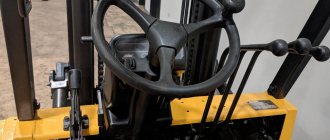"Antique Cars" is a company specializing in services related to vintage cars: sales, investments and creation of collections, complete restoration and partial repairs, maintenance, conservation and consultations. Retro cars produced more than 30 years ago are called oldtimers in many countries. And indeed, looking at them, it seems as if you were in another time. But time, about which machines can tell a lot, was inexorable to them, in some places truly merciless: they aged and rusted, silently and slowly, year after year, structural chemical changes occurred in the materials from which the parts were made, and structural elements accumulated microdamages caused by operation. Car restoration is a painstaking and lengthy process. It can take years to complete the original parts and restore a collector's car, but each specific case has its own nuances.
This section describes in detail the stages of restoration of vintage cars:
- Dismantling and disassembling a retro car, cataloging parts, removing old paint, cleaning the body.
- Production/repair of body parts made of steel, aluminum, fiberglass.
- Car chassis restoration.
- Painting works.
- Technical repair of all components of a retro car.
- Overhaul of engine and gearbox.
- Galvanic work when restoring a retro car.
- Restoration of the interior of a retro car.
- Works on wooden coverings.
- Manufacturing and repair of electrical wiring.
- Complete with missing parts. Manufacturing of lost elements.
- Sewing and restoration of a soft roof. Convertible mechanics repair.
- Testing and delivery.
After reading this section, you will learn how we will restore your old timer. Our company uses Western experience in restoring vintage cars: parallel operations, skilled labor, strict compliance with technical specifications and design drawings - this is the key to the success of the repair and restoration process. Below you will find several video examples of work already completed, as well as a detailed description of the car restoration process.
You can get acquainted with examples of completed work in this (click on the link to go) section, and below we will analyze the process of car restoration step by step. After signing the contract and delivering the vehicle to one of our workshops (Dmitrov, Dubna, Sergiev Posad, Aberdeen), the restoration process itself begins, in which several stages can be distinguished:
Stage 2. Production/repair of body parts made of steel, aluminum, fiberglass
Argon welding of aluminum is a painstaking and complex process, which is due to the chemical properties of aluminum. When you try to weld aluminum in a normal atmosphere, an oxide film instantly forms on the surface of the metal, which prevents further work. Therefore, the use of conventional electric arc welding when working with aluminum parts is impossible. To carry out such work at a high level, several components are required: argon, high-quality consumables, good modern equipment, and, most importantly, professional specialists. We managed to combine all of the above in our workshops. We receive consumables from such European suppliers as RoSlov company and Bohler Scheweisstechnik Austria GMBH. We managed to create conditions for attracting the most experienced specialists who have worked for many years in the production of military equipment of the USSR. Therefore, in the field of argon welding there are no unsolvable tasks for our employees. Using argon-arc welding, we carry out repair and restoration of engine cooling radiators, aluminum tubes, and car body parts.
Alfa Romeo 6C SS replica model work
Alfa Romeo 6C SS body frame manufacturing
Steyr 630 (left) Alfa-Romeo 6C 2500 (right)
Manufacturing of the BMW 328 body frame
Manufacturing of Mercedes 770 body frame
Manufacturing of body panels for Mercedes 300 Sl
Manufacturing of ZIS 110 elements
Mercedes 300 SL body frame
Body work ZIS convertible
Restoration of the Horch 853 body
Welding of ferrous metals is carried out according to generally accepted standards and technologies. Welding equipment is used for arc welding with coated electrodes, semi-automatic consumable electrode welding in carbon dioxide and gas welding.
If a car has a wooden frame, we restore it from the appropriate types of wood: beech, ash, oak are used to recreate the wooden body frame of retro cars, and acacia wood is used to restore wooden wheels.
The extensive experience of our craftsmen allows us to take into account all the nuances when carrying out tin work. If the damage to the original part is minor, then local repairs can be carried out using a special, gentle technology, which can be important given the age of the metal. If it is impossible to restore or a part is missing, it is manufactured again according to the original drawings.
If the original design of the car contains fiberglass parts, we restore them. If the part cannot be restored, we search for and purchase the missing spare part. It is also possible to produce a complete copy of the original fiberglass part, in agreement with the customer. In cases of work on creating replicas of cars and custom ones, the production of fiberglass body parts is one of the key stages.
Choosing a private service station to restore a car after an accident
It is very important to choose the right private car service, where your car will be restored after an accident. Take this issue seriously, because the quality of repair work depends on it.
There are many criteria that will help you understand that a car service is reliable
First of all, pay attention to the cost of the work. If the price for services is too low, there is a high probability that your car will be poorly restored after an accident.
It is not recommended to choose service stations with inflated prices. Assume that an experienced mechanic will not repair a car for pennies, and besides, he will always have regular customers. This means that a car service center with high-quality services will raise their cost to a decent level, without reducing the amount of work.
It would be nice to get an opinion from your friends or clients who have visited the selected car service center. You can always read reviews of service stations on the Internet. Every successful company always has both positive and negative reviews. Before entrusting your car to car service workers after an accident, make sure that the quality of the services provided is at the highest level. Otherwise, you may end up with an inexperienced mechanic at a newly opened service station, where the work is carried out in bad faith.
There are also companies that specialize in restoring cars after an accident. If you do not want to participate in the process and decide what will be needed during the repair work, then it is recommended to contact a company that will provide you with a comprehensive service.
It is best to make a list of the required work that needs to be done in order. Consider what budget you are willing to spend and what repair work should be done first. For example, you should first restore the chassis, so your car will be on wheels again. After a certain period of time, you can begin to restore the car body after an accident, and so on.
By acting in this way, you will not immediately use up all the funds you have, and at the same time the car will be on the move.
When the car owner is not satisfied with the way his vehicle was restored, he should file a complaint and not sign the acceptance certificate.
It is necessary to immediately sort it out and make claims, if any. Otherwise, you will have to use your own personal funds to restore the car after an accident.
Stage 11. Manufacturing and repair of electrical wiring.
Naturally, when making a wiring harness for a retro car that is being restored, we use authentic materials and not only the color, but also the cross-section of the wires fully corresponds to the car that came out of the factory 50-80-100 years ago, thanks to this, the car after restoration will be ready to withstand the most strict examination and will have maximum financial and collection value. And for our clients who are preparing a car for operation, we will be able to add a package of modern options (from an audio system and a rear view camera, to air conditioning and heated seats) and style them to match the overall design concept of a retro car.
Jaguar XK140
ZIL 41047 tuning, connecting the instrument panel
Manufacturing a wiring harness for Mercedes W113
Connecting electrical wiring BMW 340 coupe
Mercedes 129 roof controller repair
ZIL radio repair
Mercedes 300 SL electrical wiring assembly
Installation of the Mercedes 300 SL dashboard
How and with what to restore the interior of a car
We have already talked about how to transform the car interior in some of its components. What can be done on a global scale? That is, how to restore or change the interior of a car in all parts and elements?
Of course, the interior is not the engine, transmission or even suspension. During operation, attention is paid to it last. Meanwhile, the condition of the interior, like the body, is a characteristic and clear indicator of the owner’s attitude towards his own car. It does not affect consumer and driving performance, but it will certainly affect the cost of sales and, first of all, the availability of potential buyers. Some Plyushkina salons are run into such an ugly state that it is easier to throw away the car than to clean out the trash and do global detailing.
And even without special efforts, literally all elements of the interior are exposed to various kinds of influences. They wear out, shrink, bathe in ultraviolet baths and feel temperature changes. It is not for nothing that manufacturers of genuine leather emphasize that for the upholstery of car interiors they use specially tanned and processed leather, which better withstands all such “irritations.” And, in addition, it is more resistant to chemicals, no matter automobile or road.
Natural aging of materials cannot, of course, be discounted.
The steering wheel wears out, including the wooden one, whose varnish peels off and chips over time.
The armrests, whose coating is prone to wrinkles due to the characteristic impact, are wiped.
It happens that the tight material peels off the door cards and their upper parts are damaged. Although the latter is still a consequence of careless operation.
What can we say about the seat upholstery? It is wiped and torn - whether it is leather, velor or fabric.
Moreover, we are talking here not only about retro cars or, for example, oldtimers. A fairly recent car can also disappoint with its interior - not just ten years old, but within the last two or three generations, including the current one. One of the characteristic “cosmetic” defects that appears almost immediately is scratches on the plastic panels of the center console or in the area of the gear lever.
A panel breaks on the TLC Prado. In different places, and sometimes quite large-scale!
On the Infiniti FX it bubbles due to the heat.
The front panel also cracks on other brands/models.
Naturally, the front panels have damage that has nothing to do with the quality of the materials used or the design. For example, when the airbag deploys.
Shooting side curtains also cause damage - this time to the ceiling.
And, of course, the floor and trunk covering wears out.
However, it must be emphasized that all specialists involved in the restoration of automobile interiors are not delighted with the quality of the materials currently used. We are, of course, not talking about the plastic of the front panels - about the upholstery of the seats and doors. Yes, and in the 90s there were certain exceptions. For example, Japanese companies, and in particular Toyota, were inferior to their European competitors in terms of leather quality. But we still appreciate the quality of their velor from those years. Tearing and rubbing only with the most disregard. And now even premium brands - Mercedes-Benz and BMW - on models up to the middle class inclusive, only the central parts of the seats are made of leather. The lateral support, and especially the back parts, are made of a leather substitute, simply leatherette.
Such people are already turning to re-upholstering the side panels. And in the foreseeable future, specialized structures will apparently receive some permanent share of the profits. Although, as you understand, the matter is not limited to updating the upholstery.
Materials and technologies
Leather... For most aesthetes, it is still a guideline and basis for creating richly packaged interiors. At the same time, one cannot help but pay attention to the materials, some of which are more expensive and more “pretentious” than leather, while others allow you to save money without losing the external gloss and high cost.
The first includes Alcantara, or artificial suede - a symbiosis of polyester and polyurethane fibers. We got it in the 1970s. Obviously, they were disappointed in the properties of natural suede, which readily gets rubbed and greasy. With a similar velvety texture, Alcantara is as soft and durable as natural material. However, over time it does not lose its attractiveness so much. True, it is not very accessible - it costs twice as much as leather, which is not the cheapest. Therefore, Alcantara has long been inextricably linked with cars of at least a premium level, and more often even with small-scale sports cars or elite tuning.
On the opposite price side from artificial suede is eco-leather, developed back in the 60s of the last century. A product consisting of a fabric base (cotton or synthetic) with a polymer applied on top (polyethylene, rubber, cellulose). Eco-leather is often softer than natural leather and, like it, waterproof. But due to micropores, it allows air to pass through, simply “breathes,” which makes it more pleasant to contact with it at any temperature. In addition, polyurethane is quite wear-resistant and frost-resistant. We can say that eco-leather is a combination of qualities inherent in ordinary fabric, but with an increased service life and with the visual effect of genuine leather. Still, the artificial analogue is not so flexible at very low temperatures and is more susceptible to wear. And with deep damage, the tissue base will open. This is easy to put up with, given the cost - half that of animal material.
The richness of colors, texture, options with perforation - all this in eco-leather is exactly like natural leather.
Faux leather or leatherette is the oldest attempt to imitate leather - it began to be produced almost 100 years ago. It is based on the same fabric material, on which cellulose is applied on one or both sides. Later, they experimented with the outer layers, covering them, for example, with polyvinyl chloride and creating some kind of embossing on the surface. The name officially changed, but for the average person, “leatherette” forever remained leatherette. Until recently, the use of “crap” was limited to working, utilitarian cars, and often in lower trim levels. And now, as already mentioned, premium brands do not shun this.
The material is waterproof, but this, as well as its low cost, is where its positive qualities end. Faux leather is cold and therefore unpleasant for contact with the body, does not “breathe”, is not very durable and wear-resistant. For seat upholstery, it should be used only when total savings are involved.
Leather (or rather, thermal leather) is another material that has nothing to do with it - polyvinyl chloride or simply vinyl film. It does not have a fabric base and is used to cover solid elements: front panel, door cards, various plastic inserts. Can replicate the texture and color used by automakers. Or offered in an original design to add individuality to the interior.
The front panel, door trim, roof pillar strips, as well as the headliner and molded interior and trunk panels are restored and given a new look in another way - flocking. In other words, by applying small fibers to the prepared (sanded, primed, coated with electrically conductive glue) surface, which settle on it using an electrostatic field. Creates its flocator.
And here's what the process itself looks like:
The result is not entirely clear. Of course, flocking allows you to cover many defects and the consequences of their elimination. Perhaps, logically (if without radical colors) it looks on some secondary elements, the same roof pillars. But the front panel, covered with flock, even though they say that it resembles velvet and even suede, looks plush, like a toy.
Well, what about genuine leather itself? There are a lot of types and types. For example, according to the processing principle it can be aniline, semi-aniline, pigmented. The varieties are distinguished by Catania, Dakota, Monza, Nappa, Nevada, Schweizer, Valcona, etc. In some cases, this is a national brand - like Parmesan cheese. In others, the name demonstrates the level of quality or speaks of a natural or artificially acquired pattern. However, even without this, there are quality classes that take into account defects received during the life of the “carrier” or manufacturing flaws, which naturally affects the cost.
What materials and technologies are preferred in the studio?
Alexey Pavlin
Head of Avtograf company
— We don’t do flocking. Of course, such coverage has a right to exist. But, in our opinion, it looks frivolous. Any of the materials used to cover the panels is more expensive, more solid, and richer.
The damaged front panel, no matter whether the pillow was shot out or it burst on its own, will have to be glued over in the end. Attempts to somehow cover up or glue the gap, if you are an esthete, will not lead to the desired result - it will be seen.
At the same time, recovery after deployed airbags may have options. Don't need a pillow? Then we cover the window that appears with fiberglass and only then cover it with film.
If the client does not neglect safety, then we install a new pillow, leave the curtains covering it on the panel as standard, covering the joints with plastic putty. And again we cover it with film. The steering wheel hub is also restored in a similar way. Sometimes, when the pillow is located behind a separate panel, it is possible to get by with a small amount (from 3,500 rubles). More often, you still have to cover the entire front panel, which will cost at least 10,000.
Refurbished front panel with SRS Airbag embossing
We use film from the Moscow company Horn: it is of decent quality (we know from experience that it can last for years) and has a wide range of textures - we can choose an authentic coating for almost all common models.
A lot of things can be repaired on leather upholstery: cracks, burns, scratches. Including with contrast stitching, when the seam is covered with a special protective compound that sticks only to the threads.
Of course, there are limitations here. If the seams have come apart, only re-upholstering the individual elements will help - with the selection of leather identical to the original one. But in many situations it is possible to get by with restoration.
With velor it is more difficult. For example, burn areas cannot be restored to the same quality as on the skin. And it’s only possible to select fabric for new models, and not for all of them. All that remains is to drag element by element or completely.
Of course, it's more expensive. Skin restoration costs from 500 rubles per element. Reupholstery of one seat element costs 2000 or 2500 rubles, depending on whether velor or eco-leather is used. One row of seats - 8,000 and 12,000 rubles, respectively. We restore the original coating on the steering wheel rim and gearbox lever handle (2000 and 500 rubles), which can also be replaced with fresh material (from 2500 and 1000 rubles, respectively).
We can change the seat filling - when it has been sitting out or the side support bolsters are wrinkled. In general, on modern cars the quality of interior materials is far from what it was in the 90s or early 2000s. It gets to the point that on relatively inexpensive Mercedes and BMW models, even the central parts of the seats are covered with leatherette. So eco-leather, which we mainly use for upholstery, is a much more status and resource material. It is half the price of natural material, which meets the financial capabilities of most clients. And in terms of quality, if it is inferior to it, it is not by much. The wear resistance is definitely several times higher than that of leatherette.
In addition, we restore the color of plastic elements using aquaprint - wooden and pseudo-wooden panels, including the steering wheel. The ceiling, destroyed by deployed airbags, like the front panel, is restored to its original form using upholstery. There are options for materials (leatherette, film, eco-leather, genuine leather), the most expensive is Alcantara.
It’s problematic to do anything global with floor coverings. We produce EVA mats, but they do not cover the entire area.
In cases where this is exactly what you need, it is better to pay attention to 3D eco-leather rugs. This is not cheap, but it allows you to almost completely imitate the floor covering.
Let's hear one more opinion.
Ivan Burlachenko
Head of the Ricochet Plus studio, over 15 years of experience in the specialty
— Our main customers are owners of new models - SUVs, luxury crossovers, premium sedans and coupes - who crave individuality. As an upholstery material, they usually prefer genuine leather and original Alcantara.
It is mainly used for the interiors of vintage cars.
We are skeptical about restoring leather upholstery with products such as liquid leather. Yes, perhaps it will last for a while. But we know of many cases where clients, having paid money for restoration, were disappointed in the duration of the effect. They come and solve the problem radically - by re-upholstering or replacing the damaged part. For the same reason we do not use flocking. But, having an impressive base of factory materials, we can repair the seats of almost any car, replacing damaged parts without reupholstering the entire seat.
Owners of new, inexpensive cars that have low-quality or fabric upholstery materials often contact us to give the interior some luxury, but within a low budget. Here we suggest using eco-leather along with genuine leather.
We also use eco-leather to rejuvenate older SUVs - TLC 80, Nissan Safari. Their components and assemblies are still in order, but inside they are already worn out by many years and off-road use. In principle, no exclusivity is required here. It is enough to bring the interior back to normal. But if there is such an opportunity, then why not experiment with colors, embossing or the ability to play with the interior thematically.
By the way, among our clients there are also owners of cars produced at the beginning of the last decade, in the last century, or even Soviet ones. What, such cars don’t deserve attention and love?
Moreover, eco-leather - not as pretentious as natural leather - is not inferior to it in some properties. And noticeably cheaper. Two rows of seats from it, together with work, cost us 45,000 rubles. Made from genuine leather - already 80,000.
We do not use eco-leather only on the steering wheel rim, where there is a risk that the polymer will begin to peel off from the fabric base. That is, we cover it exclusively with natural material (5,000 rubles), as well as the handle of the box (1,500 rubles). But on the seats and door trim, eco-leather justifies its use.
Here you need to understand the principles of pricing. A linear meter of good eco-leather costs from 1,500 rubles. Natural - 3000 and above. But it is not sold in rolls. The skin must be cut correctly, excluding areas damaged (for example, by insect bites).
Genuine Leather
Alcantara is even twice as expensive due to the complex technological process of production and a touch of elitism. So if you are offered it or leather much cheaper than the real market value, you need to be aware that it is either a fake or of inferior quality. Or they are trying to pass off eco-leather as genuine leather. It is imperative to take into account the professionalism of the craftsmen, whose work cannot be cheap.
On the left is genuine leather, on the right is “eco”. It is difficult for the average person to distinguish one from the other
In general, there is nothing that cannot be done to the interior of the car. Ceiling reupholstery is very popular - usually with original Alcantara. Installation of the “starry sky”.
We have in our arsenal a hydrographic printing service that allows you to apply any texture to almost any hard surface. We install various equipment (refrigerators, TVs, etc.) and “furniture” (tables, bar counters, partitions).
When talking about the advantages and disadvantages of certain materials, experts emphasize that everyone needs to be treated with care and everyone needs to be looked after. For example, use special water- and dirt-repellent impregnations and conditioners that prevent the material from drying out and losing elasticity. And the simplest, but no less effective way to extend the life of the material is not to leave the car under the scorching sun. And be sure to cover the front panel with a cape. Better yet, the entire windshield should have a reflective screen.
Video about car restoration in the company’s workshops:
Video report on the restoration of Oldsmobile 98
Video report on the conversion of ZIL 4104
Video report on the restoration of Alfa Romeo
Video report on the restoration of Lagonda V12
Video report on the restoration of GAZ 21
To learn more about the work performed, go to the “our work” section (click on the link to go).
"Cosmetical tools
Many people don’t want to spend a long time removing rust stains. Some car enthusiasts are looking for simple ways to combat it. However, there are no easy ways here. When you need high-quality protection, you will have to go through all stages of processing. If you simply remove the rust from the surface, it will quickly return.
Sometimes a more external effect is required, for example, to sell a car. In such cases, choose one of the “cosmetic” products. It removes the “saffron milk caps” for a short time. The source of the problem remains.
Such products include, for example, “Anti-rust”. It quickly and efficiently removes stains for a period of 2 to 6 weeks. The effect depends on conditions and weather. The product resembles a good rust converter.
For a long-lasting effect, the causes of metal oxidation are eliminated. Block access to air and moisture. Chemicals and pastes alone are not enough here. Although you can strengthen the protection a little. To do this, varnish (transparent) is applied on top of the repaired area. Although the gain here is small. For a reliable effect, the product must first completely get rid of rust. Products like Anti-Rust cannot do this. They penetrate shallowly. Some of the rust remains and continues to destroy the car.
The winged are many, the winged are few
Now it’s easy for you to calculate the approximate cost of car restoration in our workshop. As a result, you will receive a car not in an intermediate state “on the move”, but as close as possible to the day when it left the factory assembly line. We complete this work, taking into account the search and purchase of spare parts, on average in 6-8 months.
We would like to convey to you that all of the above information is a subjective approach to the work and pricing of an individual workshop in Moscow. We believe that our prices are higher than the market, and the work performed is of exemplary quality.
If you really want to restore your car and bring it back to factory condition, we will be happy to help you do it. Our experience, technical and instrumental base allows us to implement even the most ambitious projects.







